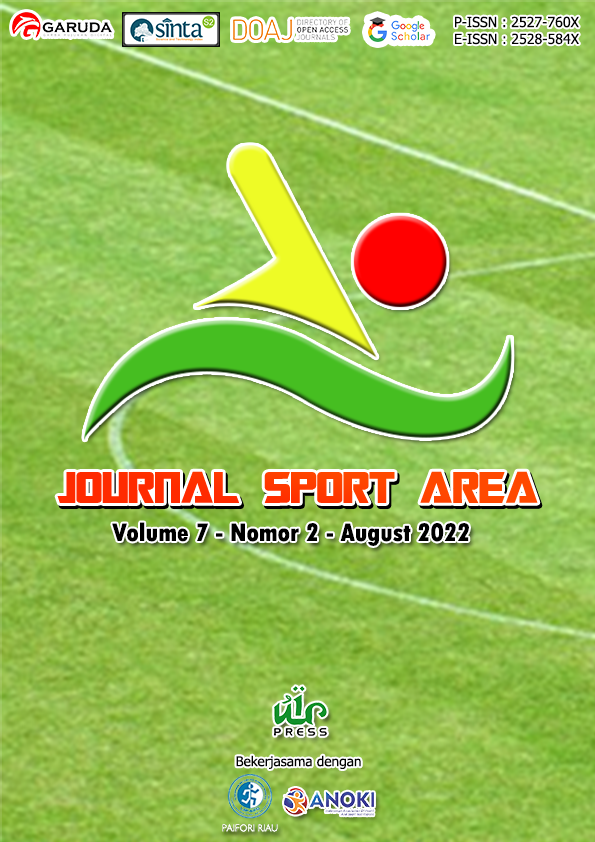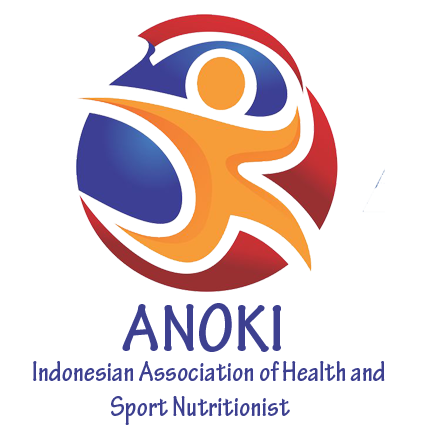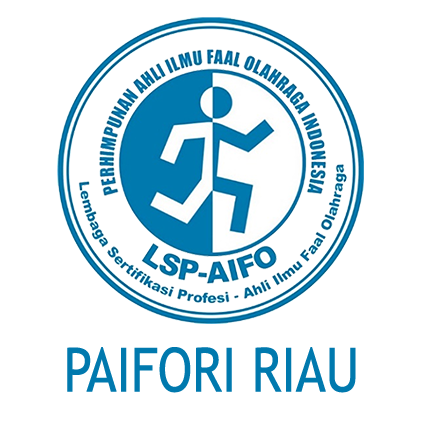Continuous and competitive circuit training: Methods to increase vo2max on young badminton player
Keywords:
Continuous, competitive, circuit training, vo2max, badmintonAbstract
The characteristic of badminton game is a sport with high intensity and intermitten actions. It takes the ability of a high level of physical condition, especially the level of VO2max to reach peak performance. There are many kinds of training method to increase VO2max, one of them is continuous circuit training and competitive circuit training. The purpose of this study is to discover the effect of continuous circuit training and competitive circuit training and to determine a more effective method to increase VO2max. This study is pre-experimental study with pre-test and post-test group design. The sample consisted of 60 badminton athletes in range of 9 – 12 years old and all of them were male. The instrument used to measure VO2max level was Multistage Fitness Test (MFT). VO2max data before and after treatement were analyzed with descriptive statistic and t-test on 5% significancy standard. Based on the data analysis, the following results were obtained: (1) There was a significant effect on the level of VO2max in the continuous circuit training group with sig 0.000 values; (2) There was a significant effect on the level of VO2max in the competitive circuit training group with values sig 0.000; and (3) There was no significant difference between the continuous circuit training group and the competitive circuit training group. So it can be concluded that continuous and competitive circuit training can increase the VO2max of young badminton players.
Downloads
References
Almy, M. A., & Sukadiyanto, S. (2014). Perbedaan Pengaruh Circuit Training Dan Fartlek Training Terhadap Peningkatan VO2 max Dan Indeks Massa Tubuh. Jurnal Keolahragaan, 2(1), 59–68. https://doi.org/10.21831/jk.v2i1.2603
Ballesta-García, I., Martínez-González-Moro, I., Ramos-Campo, D. J., & Carrasco-Poyatos, M. (2020). High-intensity interval circuit training versus moderate-intensity continuous training on cardiorespiratory fitness in middle-aged and older women: A randomized controlled trial. International Journal of Environmental Research and Public Health, 17(5). https://doi.org/10.3390/ijerph17051805
Bompa, T. O., & Buzzichelli, C. A. (2019). Periodization: Theory and Methodology of Training (R. W. Earle (ed.); Sixth Edit). Human Kinetics.
Candra, O. (2020). Tingkat Kemampuan VO2 max Pada Atlet Bola Basket Puteri POMNAS Riau. Journal Sport Area, 5(2), 106–115. https://doi.org/10.25299/sportarea.2020.vol5(2).3761
Cardozo, D. C., De Salles, B. F., Mannarino, P., Vasconcelos, A. P. S., Miranda, H., Willardson, J. M., & Simão, R. (2019). The Effect of Exercise Order in Circuit Training on Muscular Strength and Functional Fitness in Older Women. International Journal of Exercise Science, 12(4), 657–665.
Coppola, C., & Raiola, G. (2019). Interest in VO2 max capacity: Comparing Norwegian and Italian training. Journal of Physical Education and Sport, 19(5), 1825–1827. https://doi.org/10.7752/jpes.2019.s5268
Festiawan, R., Raharja, A. T., Jusuf, J. B. K., & Mahardika, M. N. (2020). The Effect of Oregon Circuit Training and Fartlek Training on the VO2 max Level of Soedirman Expedition VII Athletes. Pendidikan Jasmani Olahraga, 5(1), 62–69. https://doi.org/10.17509/jpjo.v5i1.23183
Harsono. (2018). Kepelatihan Olahraga: Teori dan Metodologi. Remaja Rosdakarya.
Ibikunle, P. O., & Enumah, U. G. (2016). Maximum oxygen uptake and cardiovascular response of Professional male football and Basketball players to Chester step test. IOSR Journal of Sports and Physical Education, 3(4), 1–5. https://doi.org/10.9790/6737-03040105
Khan, S., Nagarwala, R., Shyam, A., & Sancheti, P. (2019). Comparison of effects of continuous and interval training on aerobic capacity in healthy, non exercising young individuals. International Journal of Current Research and Review, 11(2), 1–6. https://doi.org/10.31782/IJCRR.2019.1121
Kim, J.-W., Ko, Y.-C., Seo, T.-B., & Kim, Y.-P. (2018). Effect of Circuit Training on Body Composition, Physical Fitness, and Metabolic Syndrome Risk Factors in Obese Female College Students. Journal of Exercise Rehabilitation, 14(3), 460–465. https://doi.org/10.12965/jer.1836194.097
Kim, K. H., & Lee, H. B. (2019). Effects of circuit training interventions on bone metabolism markers and bone density of old women with osteopenia. Journal of Exercise Rehabilitation, 15(2), 302–307. https://doi.org/10.12965/jer.1836640.320
Kumar, & Jyothi, E. (2020). Effect of continous training and circuit training for the development of aerobic fitness among long distance runners of Osmania University. International Journal of Health, Physical Education & Computer Science in Sports, 39(2), 105–107.
Kumar, V. S., & Maniazhagu, D. (2014). Effects of circuit resistance training on selected motor fitness variables. International Journal of Physical Education Sports Management and Yogic Sciences, 4(1), 37. https://doi.org/10.5958/j.2278-795x.4.1.009
Lockie, R. G., Dawes, J. J., Moreno, M. R., Cesario, K. A., Balfany, K., Stierli, M., Dulla, J. M., & Orr, R. M. (2021). Relationship Between the 20-m Multistage Fitness Test and 2.4-km Run in Law Enforcement Recruits. Journal of Strength and Conditioning Research, 35(10), 2756–2761. https://doi.org/10.1519/jsc.0000000000003217
Lumintuarso, R. (2020). The analysis of implementation and implementing strategy of multilateral development in sport training sessions on young athletes in Indonesia. International Journal of Human Movement and Sports Sciences, 8(6), 428–437. https://doi.org/10.13189/saj.2020.080615
Paradisis, G. P., Zacharogiannis, E., Mandila, D., Smirtiotou, A., Argeitaki, P., & Cooke, C. B. (2014). Multi-stage 20-m shuttle run fitness test, maximal oxygen uptake and velocity at maximal oxygen uptake. Journal of Human Kinetics, 41(1), 81–87. https://doi.org/10.2478/hukin-2014-0035
Paramita, M. V. A., & Sutapa, P. (2019). Pengembangan Model Pembelajaran Berbasis Permainan Sirkuit Untuk Meningkatkan Motorik Halus Anak Usia 4-5 Tahun. Jurnal Golden Age, 3(1), 1–16. https://doi.org/10.29408/goldenage.v3i01.1336
Pardiwala, D. N., Subbiah, K., Rao, N., & Modi, R. (2020). Badminton Injuries in Elite Athletes: A Review of Epidemiology and Biomechanics. Indian Journal of Orthopaedics, 54(3), 237–245. https://doi.org/10.1007/s43465-020-00054-1
Patah, I. A., Jumareng, H., Setiawan, E., Aryani, M., & Gani, R. A. (2021). The Importance of Physical Fitness for Pencak Silat Athletes: Home-Based Weight Training Between Tabata and Circuit Can it Work? Journal Sport Area, 6(1), 108–122. https://doi.org/10.25299/sportarea.2021.vol6(1).6172
Phomsoupha, M., & Laffaye, G. (2015). The Science of Badminton: Game Characteristics, Anthropometry, Physiology, Visual Fitness and Biomechanics. Sports Medicine, 45(4), 473–495. https://doi.org/10.1007/s40279-014-0287-2
Plevková, L., & Peráčková, J. (2019). The Effects of a 6-Week Strength and Endurance Circuit Training on Body Image of High School Girls. Acta Facultatis Educationis Physicae Universitatis Comenianae, 59(2), 184–192. https://doi.org/10.2478/afepuc-2019-0016
Putra, P. P., Rufi’i, R., & Cholid, A. (2020). Circuit training : training model to support the accuracy of backhand in badminton. Journal Sport Area, 5(1), 84–96. https://doi.org/10.25299/sportarea.2020.vol5(1).4634
Ramos, J. S., Dalleck, L. C., Tjonna, A. E., Beetham, K. S., & Coombes, J. S. (2015). The Impact of High-Intensity Interval Training Versus Moderate-Intensity Continuous Training on Vascular Function: a Systematic Review and Meta-Analysis. Sports Medicine, 45(5), 679–692. https://doi.org/10.1007/s40279-015-0321-z
Rumahpasal, O., Kristinawati, W., & Setiawan, A. (2020). Athletes Sports Orientation Viewed From Parental Social Support And Gender. Journal Sport Area, 5(2), 128–145. https://doi.org/10.25299/sportarea.2020.vol5(2).4775
Satria, M. H. (2019). Pengaruh Latihan Circuit Training Terhadap Peningkatan Daya Tahan Aerobik Pemain Sepakbola Universitas Bina Darma. Jurnal Ilmiah Bina Edukasi, 11(01), 36–48. https://doi.org/10.33557/jedukasi.v11i01.204
Seo, Y. G., Noh, H. M., & Kim, S. Y. (2019). Weight loss effects of circuit training interventions: A systematic review and meta-analysis. Obesity Reviews, 20(11), 1642–1650. https://doi.org/10.1111/obr.12911
Smirmaul, B. P. C., Bertucci, D. R., & Teixeira, I. P. (2013). Is the VO2max that we measure really maximal? Frontiers in Physiology, 4 AUG(August), 1–5. https://doi.org/10.3389/fphys.2013.00203
Sonchan, W., Moungmee, P., & Sootmongkol, A. (2017). The Effects of a Circuit Training Program on Muscle Strength Agility Anaerobic Performance and Cardiovascular Endurance. International Journal of Sport and Health Sciences, 11(4), 176–179.
Sugiyono. (2016). Metode Penelitian Kuantitatif, Kualitatif, dan R&D. Bandung: Alfabeta.
Taufik, M. S., Widiastuti, Setiakarnawijaya, Y., & Dlis, F. (2021). Effect of circuit and interval training on vo2max in futsal players. Journal of Physical Education and Sport, 21(4), 2283–2288. https://doi.org/10.7752/jpes.2021.s4305
Wen, D., Utesch, T., Wu, J., Robertson, S., Liu, J., Hu, G., & Chen, H. (2019). Effects of different protocols of high intensity interval training for VO2 max improvements in adults: A meta-analysis of randomised controlled trials. Journal of Science and Medicine in Sport, 22(8), 941–947. https://doi.org/10.1016/j.jsams.2019.01.013
Wewege, M., van den Berg, R., Ward, R. E., & Keech, A. (2017). The effects of high-intensity interval training vs. moderate-intensity continuous training on body composition in overweight and obese adults: a systematic review and meta-analysis. Obesity Reviews, 18(6), 635–646. https://doi.org/10.1111/obr.12532
Wilke, J., Kaiser, S., Niederer, D., Kalo, K., Engeroff, T., Morath, C., Vogt, L., & Banzer, W. (2019). Effects of high-intensity functional circuit training on motor function and sport motivation in healthy, inactive adults. Scandinavian Journal of Medicine and Science in Sports, 29(1), 144–153. https://doi.org/10.1111/sms.13313
Wismanadi, H., Kafrawi, F. R., Pramono, M., Firmansyah, A., & Rusdiawan, A. (2020). Rasio Interval Training Dalam Latihan Shadow Bulutangkis Ratio of Interval Training in Shadow Badminton Training. Journal Sport Area, 5(2), 186–198. https://doi.org/10.25299/sportarea.2020.vol5(2).5019
Wong, T. K. K., Ma, A. W. W., Liu, K. P. Y., Chung, L. M. Y., Bae, Y. H., Fong, S. S. M., Ganesan, B., & Wang, H. K. (2019). Balance control, agility, eye-hand coordination, and sport performance of amateur badminton players: A cross-sectional study. Medicine (United States), 98(2), 1–6. https://doi.org/10.1097/md.0000000000014134
Yanti, N., Gustian, U., Gani, R. A., & Setiawan, E. (2022). Analysis of the vo2max physical condition of tarung derajat athletes through yoyo test: Preparation for pre-PON XX. Journal Sport Area, 7(1), 125–133. https://doi.org/10.25299/sportarea.2022.vol7(1).6717
Published
How to Cite
Issue
Section
This is an open-access article distributed under the terms of the Creative Commons Attribution-ShareAlike 4.0 International License which permits unrestricted use, distribution, and reproduction in any medium. Copyrights of all materials published in Journal Sport Area are freely available without charge to users or / institution. Users are allowed to read, download, copy, distribute, search, or link to full-text articles in this journal without asking by giving appropriate credit, provide a link to the license, and indicate if changes were made. All of the remix, transform, or build upon the material must distribute the contributions under the same license as the original.
Accepted 2022-07-13
Published 2022-08-08
















